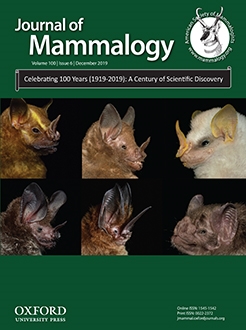The rise of the Panamanian Isthmus 3–4 million years ago enabled the first dispersal of mammals between North and South America in what is known as the Great American Biotic Interchange. Modern deforestation threatens the historic forest connectivity and creates new habitat for open-country species, as documented by recent expansions of North American coyotes (Canis latrans) and South American crab-eating foxes (Cerdocyon thous) into Central America. We used camera traps to map the expansions of these species into eastern Panama and found that, by 2015, coyote populations had colonized most agricultural area west of Lago Bayano. Most of our camera arrays east of this point documented crab-eating foxes, and evidence from roadkills showed some foxes had advanced farther west, but we never documented both species at the same camera-trap array, suggesting the possibility of fine-scale spatial avoidance. We used a data fusion approach to build species distribution models combining our camera surveys with records from the literature and roadkill. While the auxiliary data improved the predictive accuracy for both species, few clear habitat patterns emerged, which might reflect the generalist tendencies of these canids, or the fact that both are in the early stages of colonizing the region. Camera-trap photos showed that both species were nocturnal and revealed some dog-like morphology in coyotes, which could indicate their recent hybridization with dogs (Canis familiaris). Our continued monitoring of the Darién documented single coyotes moving through the western edge of the area in 2016 and 2018. This leaves only the great Darién forests between coyotes and South America. If deforestation continues in the region, these two invasive canids could represent the first of a new, Not-So-Great American Biotic Interchange, where generalist species adapted to human disturbance cross continents and threaten native biota.
How to translate text using browser tools
19 November 2019
Canid collision—expanding populations of coyotes (Canis latrans) and crab-eating foxes (Cerdocyon thous) meet up in Panama
Allison W. Hody,
Ricardo Moreno,
Ninon F. V. Meyer,
Krishna Pacifici,
Roland Kays
ACCESS THE FULL ARTICLE

Journal of Mammalogy
Vol. 100 • No. 6
December 2019
Vol. 100 • No. 6
December 2019
camera traps
coyote
crab-eating fox
data fusion
Great American Biotic Interchange
invasive species




